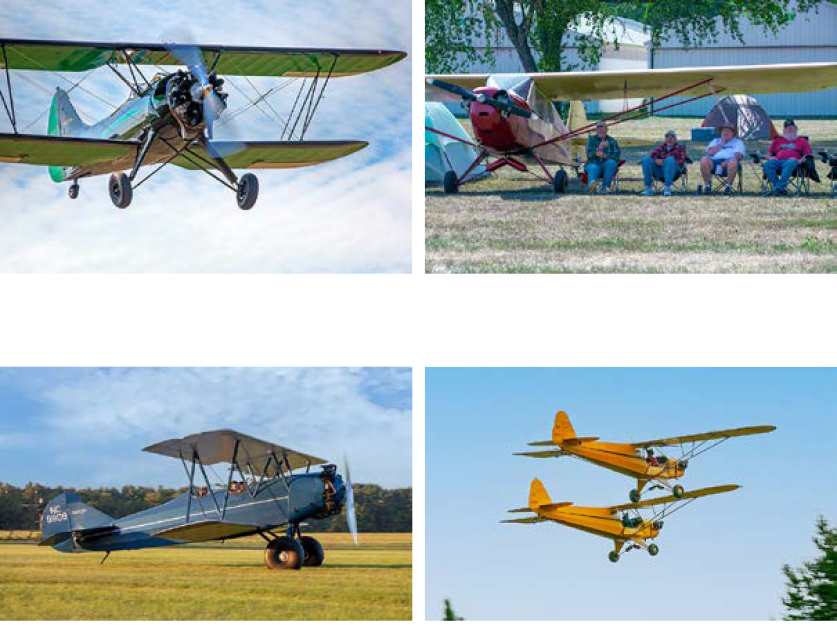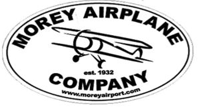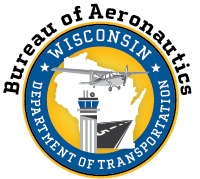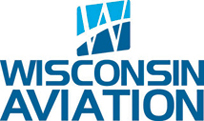Published in Midwest Flyer Magazine December 2023 Digital Issue
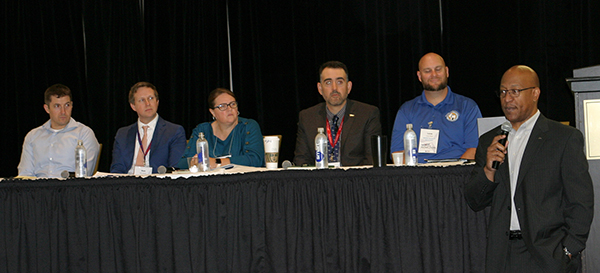
Wisconsin Department of Transportation, Bureau of Aeronautics panel discussion. Midwest Flyer Magazine Photo by Dave Weiman
(From left to right):
Matt Messina, Airport Engineering Unit Supervisor, matthew.messina@dot.wi.gov, 608-267-7108;
Matt Malicki, Airport Engineering Section Chief, matthew.malicki@dot.wi.gov, 608-267-5273;
Tami Weaver, Airport Program Section Chief, tamera.weaver@dot.wi.gov, ; 608-267-4492;
Max Platts, Aeronautical & Technical Services Section Chief, thomas.platts@dot.wi.gov, 608-266-1745;
Lucas Ward, Airport Construction Standards Chief, lucas.ward@dot.wi.gov, 608-266-2729;
and David Greene, Director, david.greene@dot.wi.gov, 608-266-2480.
APPLETON, WIS. – The 67th Wisconsin Aviation Conference was held September 30-22, 2023, at the Paper Valley Hotel in Appleton, Wisconsin. Conference attendees embarked on a journey celebrating aviation’s future, including discussions of environmental issues, operations, funding, technological advancements, and sustainable practices. The lineup of speakers included experts who are at the forefront of aviation. Their insights and knowledge provided invaluable perspectives, inspired new ways of thinking, and equipped participants with the tools needed to navigate the ever-evolving aviation landscape beyond the conference sessions.

Leading the conference was Rachel Engeler, President of the Wisconsin Airport Management Association (WAMA), the sponsoring organization.
Appleton International Airport (ATW) was the host airport. According to a 2015 economic impact study conducted by the Wisconsin Bureau of Aeronautics, ATW provided $676 million in economic output, and supported 3,200 jobs, to the local economy in Outagamie County.
ATW is home for Air Wisconsin Airlines, Gulfstream Aerospace, MaxAir Charter, the Fox Valley Technical College Public Safety Training Center, and the Aircraft Rescue Fire Fighting (ARFF) Training Center.
It was announced at the conference that the Wisconsin Department of Transportation, Bureau of Aeronautics (BOA), has undertaken a new economic impact study for commercial and general aviation airports, selecting “Jviation,” a Woolpert Company, to conduct the study. The staff working on the project has completed more than 30 similar studies for other states.
Jviation will collect information and report annual estimated economic impacts for airport management, airport business tenants, average annual capital investment, and general aviation visitor spending. They will report employment, payroll, spending, and total yearly economic activity results. The data will provide BOA, airports, aviation stakeholders, elected officials, communities, and others with important information on the economic contributions of each airport and statewide impacts.
The BOA economic impact study staff has completed the initial step in the data collection process. This portion of the process included documenting the results of the first group of surveys from airports, business tenants, and visitors, along with a webinar. The next steps in the study will be to finish collecting data, analyze the direct impacts, and measure the annual economic activity of airports.
In late August, BOA held the first of three planned project webinars for airports to provide information on the study process, products, and schedule, and to share the preliminary results from the initial surveys. Some of the findings include 1.8 million visitors arriving annually on commercial airline flights and more than 400,000 on general aviation aircraft. Additionally, there were more than 300 business tenants at the studied airports.
The BOA wishes to thank Wisconsin airports for their participation in responding to the surveys and inquiries. These timely and thorough responses will give Wisconsin airports a more robust Economic Impact Study outcome. WisDOT expects the study to be completed in the spring of 2024.
The Bipartisan Infrastructure Law’s (BIL) Airport Improvement Grant (AIG) program was discussed. This funding is available to each airport that is part of the National Plan of Integrated Airport Systems (NPIAS), which includes up to 79 Wisconsin non-primary airports. BIL AIG is like the annual non-primary entitlements, but what is dissimilar is how the funding is obtained compared to the Block Grant through the Airport Improvement Program (AIP). This presentation reviewed the funding available, how long it will be available, the differences in obtaining BIL versus AIP, and most importantly, emphasized the need to plan how to use BIL funding at airports. The speaker was Mark Graczykowski, PE, Airport Program Engineer, Wisconsin BOA.
Participants had the opportunity to meet with Wisconsin Bureau of Aeronautics staff and hear what’s new at that office. The Bipartisan Infrastructure Law was a big part of those discussions.
While all airports are a little different, they face similar issues. The General Aviation Roundtable Forum allowed airport managers and county and city officials to discuss general aviation airport topics of interest and ask questions in a non-judgmental environment.

What is possible? How can we support each other? A round table discussion on current and exciting topics facing commercial service airports was held.
Being asked to serve on an airport board or commission is a great honor, but it can be a challenging task. This open roundtable with airport officials, board members, and commissioners was designed to address the issues they face and to celebrate the successes they have achieved.
For airports located in one of the more than 120 municipalities in the state with a stormwater district, stormwater runoff fees can have a major impact on their annual operating budget. There are a variety of credits available through most districts. Airport managers learned strategies to minimize their fees and ways to alleviate the financial burden of rainfall and snowmelt. Howard “Buck” Barker, PE, of RVT Engineering Services, was the featured speaker.
All airports must deal with snow and ice to one degree or another for a large part of the year. This session provided insight for airport managers, operations/maintenance staff, and contractors on snow removal best practices, tips and tricks, and FAA regulations.
Speakers included Kurt Stanich of Waukesha County Airport, and Emily Whitt and David Sweeney of Milwaukee Mitchell International Airport.
Attendees learned what WAMA is doing to advocate for airports at the state and federal levels through WAMA’s lobbying efforts. Brian Grefe, A.A.E., Airport Director, Central Wisconsin Airport, and Mark Wadium, Outagamie County Lobbyist, were featured speakers.
Other topics included runways as the lifeblood of an airport and why crosswind runways may not be eligible for AIP funding, even if they were built with AIP funds in the past. Ian Turner, A.A.E., Airport Director, La Crosse Regional Airport; Jim Schell, C.M., Airport Director, Wittman Regional Airport; and Evan Barrett, AICP, C.M., Manager, Midwest Aviation Planning, Mead & Hunt, covered this topic.
Many factors need to be considered when planning for non-aeronautical development at an airport. This presentation identified these factors and the options for implementing non-aeronautical land uses. As part of the planning process, the applicability of Section 163 also needs to be considered. This presentation provided an overview of Section 163 and how airports should coordinate with the FAA to receive a Section 163 determination when planning for non-aeronautical development. The speaker was Zachary Puchacz, C.M., ACE, Airport Planner, at Mead & Hunt.
The Wisconsin Bureau of Aeronautics conducted an “Airport Project Development 101 Session” in which airport managers learned how to get started on a project. Managers learned about the steps involved in planning, designing, and bidding, and why initial project planning well in advance is crucial to keep projects on schedule. Speakers included Lucas Ward, Airport Construction Standards Chief, Wisconsin BOA; Matt Messina, PE, Airport Engineering Section Unit Supervisor, Wisconsin BOA; and Matt Malicki, PE, Airport Engineering Section Chief, Wisconsin BOA.
In addition to Wisconsin Bureau of Aeronautics officials, airport division officials from the Federal Aviation Administration were also on hand briefing attendees on funding opportunities and challenges.
Airport managers had the opportunity to hold “plan-on-the-fly meetings” with both Wisconsin Bureau of Aeronautics staff, and FAA Chicago Airports District Office personnel about issues specific to their airport.
Fly-ins, fundraisers, socials, and other special events engage the community and help airports succeed. Giving young people a firsthand opportunity to build or fly airplanes can be life changing. Airport managers learned how to take a grassroots approach to build a community of supporters around their airport to help inspire people of all ages and ensure that aviation enjoys a vibrant future. Speakers included Larry Sullivan, Founder, Kettle Moraine Youth Aviation; and Jeff Russell, Director, Recreational Aviation Foundation.
The topic of how to alleviate the waiting list for hangar space was led by Greg Cullen, C.M., Airport Director, Southern Wisconsin Regional Airport, and
Jim Schell, C.M., Airport Director, Wittman Regional Airport.
Encroachment of incompatible land uses and obstructions near airports hinder the long-term utility of Wisconsin airports. State law affords airport sponsors a strong tool to protect critical airport infrastructure. Doing this requires a properly designed and effectively implemented local ordinance, which considers the future, involves the public, and has local support. This session was an opportunity to review and improve existing local ordinances and discuss how to implement them effectively. Speakers included Hal Davis, C.M., Airport Compliance Program Manager, Wisconsin BOA, and Melissa Underwood, Senior Aviation Planner, SEH.
Marketing events for commercial and GA airports was led by Christina Cole, Senior Digital Aviation Strategist, Advance Aviation.
Bergstrom Automotive President and CEO Tim Bergstrom attended the conference to talk about growth and development in today’s market. Bergstrom Automotive, headquartered in Neenah, Wisconsin, is one of the top 50 automotive retailers in the U.S.
The F-35 jet fighter replaced the F-16 at the Wisconsin Air National Guard’s 115th Fighter Wing at Dane County Regional Airport in Madison, Wisconsin in 2023. Colonel Bart Van Roo, the Wing Commander, shared the story behind the design and deployment of the new 5th generation aircraft. Col. Van Roo explained how the F-35 represents a true paradigm shift in fighter aircraft design and performance. He explored the F-35’s cutting-edge features in-depth, highlighting its groundbreaking capabilities, maneuverability, and state-of-the-art sensor integration.
Awards & Recognition
Each year, the Wisconsin Airport Management Association recognizes individuals who have made an impact on aviation in the state.
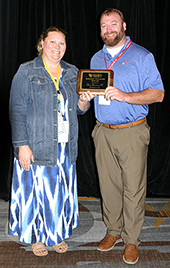
Rachel Engeler, President of the Wisconsin Airport Management Association (WAMA), presented the “Airport Engineer of the Year Award” to Terry Donovan of Mead & Hunt. Midwest Flyer Magazine Photo by Dave Weiman
Terry Donovan of Mead & Hunt received the “Airport Engineer of the Year Award.” Terry has been with Mead & Hunt since graduating from UW-Platteville with a degree in Civil Engineering. He is the project manager for Southern Wisconsin Regional Airport, Dane County Regional Airport, and Seymour Johnson Air Force Base in South Carolina, and routinely assists with other airport projects. He is a tremendous asset, contributing to the success of airports. Terry balances complex projects at multiple airports while ensuring projects are completed safely. He goes the extra mile, often working after hours to ensure projects stay on track. Additionally, he volunteers his time, serving on the Wisconsin Aviation Conference planning committee.
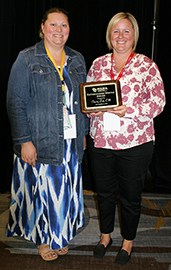
Rachel Engeler, President of the Wisconsin Airport Management Association (WAMA), presented Charity Zich of Chippewa Valley Regional Airport, with WAMA’s “Distinguished Service Award.” Midwest Flyer Magazine Photo by Dave Weiman
Charity Zich, Director at Chippewa Valley Regional Airport, received WAMA’s “Distinguished Service Award” for 2023. Charity has served the airport for 17 years. She continually makes outstanding contributions to Wisconsin aviation through her tenure at the airport and in serving on the WAMA Board of Directors. Charity has helped the board keep its past in sight, while working on the airport challenges of today and tomorrow. Her uniquely pragmatic problem-solving approach has been most evident in her efforts to keep commercial air service in Eau Claire. Charity is a leader in her community, and in the aviation industry throughout Wisconsin and beyond.

Rachel Engeler, President of the Wisconsin Airport Management Association (WAMA), presented the “Blue Light Award” to Dick Knapinski of EAA. Midwest Flyer Magazine Photo by Dave Weiman
WAMA’s “Blue Light Award” for excellence in aviation journalism was presented to Dick Knapinski, who has promoted aviation for more than 30 years. Dick has been EAA’s director of communications since January 2010, having advanced to that position after serving as a member of EAA’s public relations/marketing staff since 1992. His responsibilities include working with media representatives who report on EAA activities throughout the year. Those activities include EAA AirVenture Oshkosh, which has a yearly attendance of more than 600,000 spectators, and attracts 10,000 aircraft and over 800 members of the international media. Before joining the EAA staff, Dick worked for broadcast and print media outlets throughout Wisconsin. He continues to write for newspapers and magazines, and co-authored the book “EAA Oshkosh: The Best Aviation Photography.”
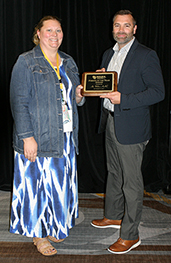
Rachel Engeler, President of the Wisconsin Airport Management Association (WAMA), presented Abe Weber of Appleton International Airport with WAMA’s “Person of the Year Award.” Midwest Flyer Magazine Photo by Dave Weiman
Abe Weber, Director of Appleton International Airport, received WAMA’s “Person of the Year Award.” Abe has served on the WAMA Board of Directors since 2012, and as past president of the organization. He has been an active leader in WAMA’s advocacy, leading past efforts to pass sales tax exemptions for aviation parts and labor in Wisconsin. As a WAMA governmental affairs committee member, over the past year Abe has shepherd efforts to pass legislation to help airports deal with nuisance wildlife. He continues to look for opportunities to improve aviation for all Wisconsin airports.
Bob O’Brien received WAMA’s “Lifetime Service Award,” having worked in the aviation industry for nearly four decades. He served in leadership roles at various airports throughout Wisconsin, Indiana, Iowa, Illinois, Minnesota, and Georgia. The list of airports is long, including Madison, Green Bay, La Crosse, Platteville, Fort Wayne, Dubuque, Springfield, Brainerd, and Columbus (GA). In 2012, after nine years at Chicago Rockford International Airport, Bob was appointed the executive director of WAMA and served in that position until 2020. He also served 20 years in the U.S. military, mostly in the National Guard and Army Reserves.
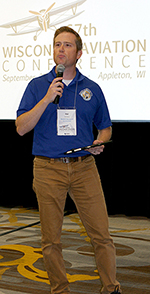
Hal Davis, C.M., the Airport Compliance Manager with the Wisconsin Department of Transportation, Bureau of Aeronautics, recognized pilots who have achieved various levels in the “Fly Wisconsin Passport Program.” Midwest Flyer Magazine Photo by Dave Weiman
Hal Davis, C.M., the Airport Compliance Manager with the Wisconsin Department of Transportation, Bureau of Aeronautics, recognized pilots who have achieved various levels in the “Fly Wisconsin Passport Program.” The Wisconsin Department of Transportation, Bureau of Aeronautics, and the Wisconsin Airport Management Association, continue to team up to bring the airport passport program to Wisconsin. Pilots and their passengers may earn awards by flying into Wisconsin airports, attending FAA safety seminars, and visiting Wisconsin’s aviation attractions.
The program launched on September 1, 2017. Since then, over 2,500 participants have registered. Pilots wishing to register for the program should visit wisconsindot.gov/flywi. Mail-in registration cards can also be found at airports.
Achieving the Gold Level for 2023 were Sydney Cohen, Michael Morrow, Mark Owen, and Gregory Patchel.
Achieving the Silver Level for 2023 were Sydney Cohen, Dennis Davis, Debi Lett, Brian Lett, Michael Morrow, Mark Owen, and Gregory Patchel.
Achieving the Bronze Level for 2023 were Sydney Cohen, Debi Lett, Brian Lett, Katherine Morrow, Michael Morrow, Mark Owen, Gregory Patchel, and Dwight Simpson.
Jim Schell, Airport Director at Wittman Regional Airport in Oshkosh, was elected President of WAMA, and Harold Mester, Director of Marketing and Public Affairs at Milwaukee Mitchell International Airport and Milwaukee Timmerman Airport, joined the executive committee.
WAMA also welcomed the following new board members: Todd Berry, Manager, Prairie du Chien Municipal Airport; Aimee Scrima, Operations Supervisor, Waukesha County Airport; and Mike Shaw, Manager, West Bend Municipal Airport.
The 2024 Wisconsin Aviation Conference will be held October 2-4, 2024, at the Madison Marriott West in Middleton, Wisconsin. For additional information, email director@wiama.org.
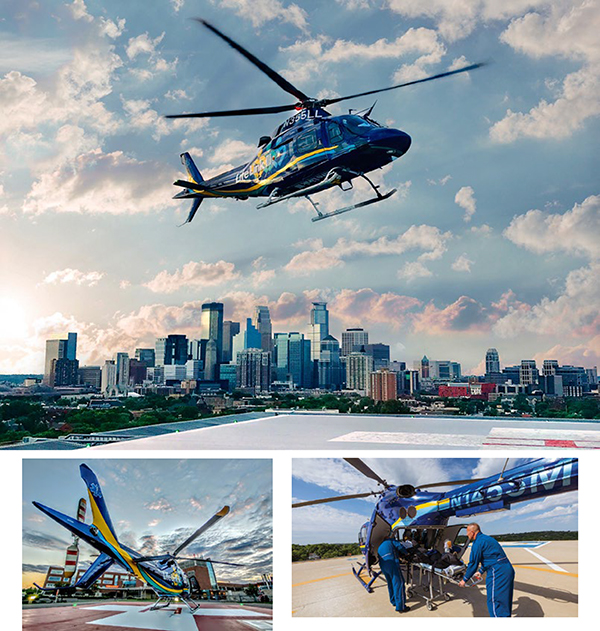











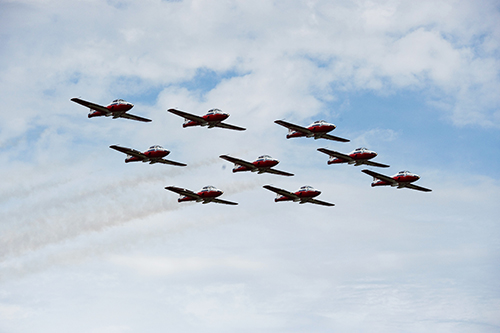
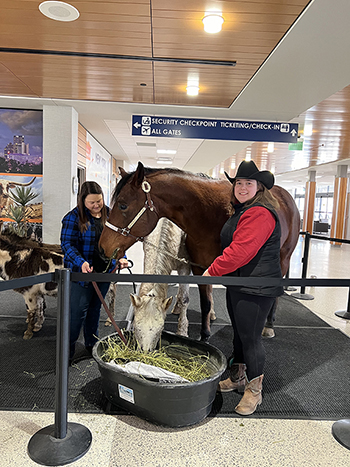
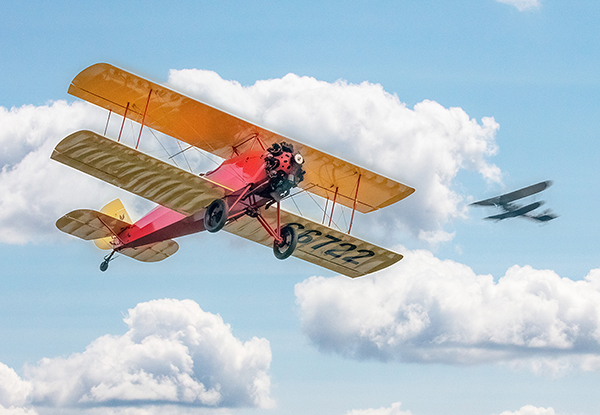
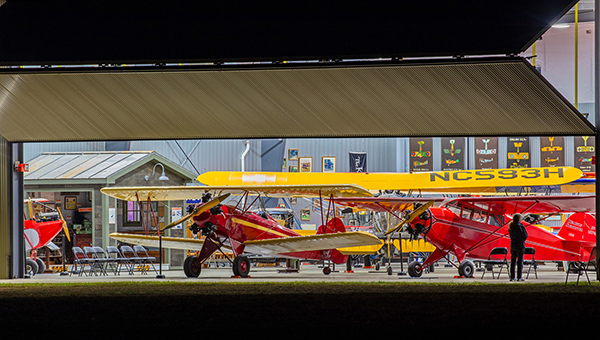 Article & Photos by Skot Weidemann
Article & Photos by Skot Weidemann
